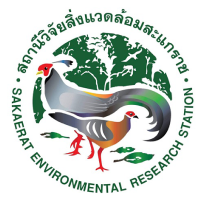Keywords :
Bungarus fasciatus; Banded Kraits; Spatial Ecology; Habitat Use; Activity
บทคัดย่อ :
As the integrity of our global ecosystems continues to face an onslaught of anthropogenic threats, the need for multi-scaled research approaches has become increasingly important. However, deficiencies in baseline life-history data remain for even widely distributed and medicinally significant species. These deficiencies are prominent for many small and cryptic species in tropical regions and are especially lacking for snakes. The aims of this research were to investigate how one of Southeast Asia s most venomous snakes, the banded krait (Bungarus fasciatus), lives within an agricultural landscape. Between August 2015 and December 2017, the movement and activity of adult banded kraits (n = 4), 2 females and 2 males were intensively monitored using radio telemetry. Kraits were located daily, for 379.25 (+-) 318.58 days. The krait s occupied home ranges ranging from 4.07 ha (25.5 rai) to 272.15 ha (887.2 rai), with a mean of 103.58 ha (+-) 141.95 ha (95% fixed kernel). All home range estimate areas were dominated by race paddies, which comprised approximately 68.10% of the combined home range study area. However, kraits preferred to shelter amongst the less abundant micro-habitats such as paddy bunds, field margins, ponds,
เอกสารอ้างอิง :
Knierim, T. K. (2018). The spatial ecology, habitat use, and activity of Banded kraits (Bungarus fasciatus) in the Sakaerat Biosphere Reserve (Doctoral dissertation, School of Biology Institute of Science Suranaree University of Technology).



